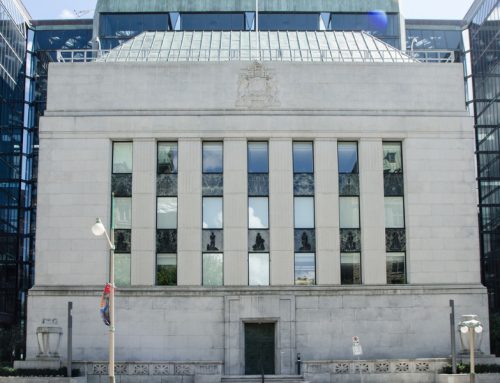These are definitely crazy times we are going through. Times that we will never forget. Everyone has been impacted by COVID-19 in one way or another. All we can do is adapt to this new way of life and try to support each other as much as we can.
The cononavirus is not only a health crisis, but it’s an economic crisis as well. It’s not just that our economy is bad right now. It is almost completely shut down. Not just the Canadian economy, but the global economy.
The stock market has seen record single day drops as well as single day gains. Large swings are now becoming the norm. Until recently, the Dow Jones Industrial average saw its largest single day point loss on February 5th, 2018, which was a loss of 1,175 points. In the past five weeks, we’ve seen this record broken four times, with the largest single day drop being a whopping 2,997 points on March 16th.
The Dow has also seen some of its largest gains. Before the coronavirus pandemic, the largest single day gain was on December 26, 2018 with a gain of 1,086 pts. In the month of March alone, we’ve seen this record broken five times with the best day seeing the Dow gaining 2,112 pts on March 24th.
How This Affects Mortgage Rates
As the stock market experiences unprecedented swings, so does the bond yields, which is one of the main influencers of fixed mortgage rates. Bond yields only tell part of the story however. Market volatility and liquidity (funds available to lenders for mortgages) also play major roles. The market is now more volatile than ever, which makes mortgage lenders nervous. For this reason, fixed rates will be a little higher than they normally would, relative to the bond yields. There were some concerns with liquidity, which has since been alleviated due to the federal government promising billions in support, which is good news. This should keep mortgage rates in check for now, however I would not expect to see fixed mortgage rates start to plummet back downward.
March 2020 – The Most Unique Month The Mortgage Industry Has Ever Seen
The past few weeks have been quite a roller coaster. Bond yields plummeted down to a new record low, only to have them do a complete 180 and start soaring, almost overnight.
When the Bank of Canada makes a change to prime rate, it’s usually only 0.25% at a time.
We however saw three 0.50% cuts to prime rate last month, two of which were unscheduled rate announcements. It’s rare for the BOC to make even one unscheduled rate announcement, let alone two. In this case, they were only 14 days apart. Unprecedented.
Will the Bank of Canada cut their rate further?
I would say there is a good chance of this happening.
There is still room for more downward movement, and it’s possible we could see them come down to zero percent. Note that this does not mean that 0% mortgages will be available. This is referring to the Bank of Canada’s overnight rate, which is the rate that mortgage lenders based their prime rate on. The next scheduled announcement by the Bank of Canada will be on April 15th, where it’s possible that we could see the rate drop to zero.
Prime rate is only relevant to those in variable rate mortgages and HELOC products. Fixed mortgage rates can move independently, as they have been doing. The prime rate has been dropping fast, while at the same time we’ve seen 5 year fixed mortgage rates increase by 0.50% for reasons explained above.
Are Variable Rate Mortgages Now The Way To Go?
The discounts on variable rate mortgages have shrunk substantially. In many cases, they’ve been eliminated altogether. There is still one lender remaining with variable rates as low as 0.50% (1.95%), however It’s just a matter of time before this disappears. Most mortgage lenders have already moved to prime + mortgage rates. It’s likely that new variable rate mortgages will continue to climb, and I would expect to see prime +1.00% soon. This is what happened in 2008, which was the last major financial crisis.
As more increases to variable rate mortgages are expected (not referring to prime rate), if you can get yourself locked in to a lower variable rate mortgage in the prime -0.40 – 0.50% range, then this is something that can still be considered.
What Can Be Expected From Prime Rate Over The Next Several Years
Our economy has taken quite a beating already, and it will get worse before it gets better. It’s impossible to predict how long the pandemic will last, so I would not expect things to go back to normal anytime soon. Recovery is going to take years. I would expect the prime rate to remain at this level for at least the next two or three years. Perhaps longer. It would not surprise me if we went the next five years without seeing an increase. Time will tell of course.
Paul Meredith is the author of the Amazon #1 best selling book, Beat the Bank
– How to Win The Mortgage Game in Canada, and has ranked as one of the top
75 mortgage brokers in Canada since 2016. He was a finalist for Mortgage
Broker of the Year in 2018, and can be seen as the exclusive mortgage broker on
season two of TV’s Top Million Dollar Agent.









Leave A Comment